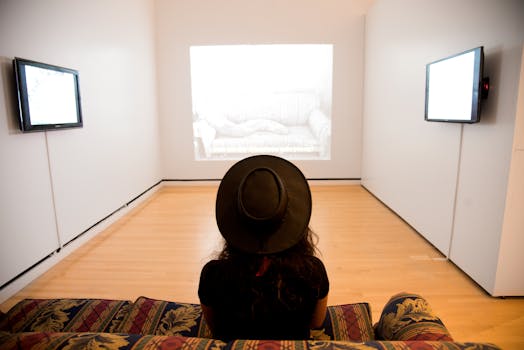The Hidden Histories of Lesser-Known Museums

When thinking about museums, places like the Louvre, the British Museum, and the Smithsonian often come to mind. However, beyond these famous institutions lie countless lesser-known museums that hold rich and fascinating histories waiting to be uncovered. These hidden gems often tell unique stories that offer new perspectives on art, culture, and history.
Lesser-Known Museums
Lesser-known museums often offer an intimate experience that larger institutions cannot match. Without the overwhelming crowds, visitors can take their time to absorb the exhibits, engage with the material on a deeper level, and sometimes even interact directly with curators or artists. For instance, the Museum of Broken Relationships in Zagreb, Croatia, features personal objects from failed relationships worldwide, each accompanied by a story. This unique concept provides a poignant look into the human condition.
Additionally, these museums are often situated in off-the-beaten-path locations, adding an element of adventure to the visit. Discovering a hidden museum can feel like uncovering a secret treasure trove of knowledge and culture. The lesser foot traffic also means these museums can house delicate or rare artifacts that require more controlled environments.
Smaller museums often focus on niche subjects or local history that larger institutions might overlook. For example, the Neon Museum in Las Vegas preserves iconic neon signs from the city's past, offering a glimpse into the evolution of advertising and design in Sin City.
Unique Exhibits and Collections
One of the most appealing aspects of lesser-known museums is their unique exhibits and collections. These institutions frequently house items that are not found anywhere else. Take the International Spy Museum in Washington D.C., for example. It features an extensive collection of espionage artifacts, from invisible ink letters to concealed cameras and weapons used by spies throughout history.
In Iceland's Reykjavik Maritime Museum, visitors can explore exhibits detailing Iceland's seafaring history, including fishing techniques, maritime disasters, and naval warfare. The museum's location in a historic fish factory adds another layer of authenticity to the experience.
Another fascinating example is the Museum of Jurassic Technology in Los Angeles. This museum blurs the lines between fact and fiction with its eclectic mix of exhibits on natural history, art, science, and mythology. It's a place where visitors are encouraged to question what they know and embrace curiosity.
Community Engagement and Education
Lesser-known museums play a crucial role in their communities by providing educational programs and engaging local residents in cultural activities. The Tenement Museum in New York City offers guided tours of restored tenement buildings on Manhattan's Lower East Side, telling the stories of immigrant families who lived there between the 19th and 21st centuries.
These museums often collaborate with schools and community organizations to offer workshops, lectures, and hands-on activities that enrich local education. For instance, The National Civil Rights Museum at the Lorraine Motel in Memphis provides resources for teachers and students to learn about the American civil rights movement through interactive exhibits and primary source documents.
Furthermore, smaller museums frequently act as stewards of local heritage by preserving artifacts that have significant cultural value to their communities. The Black Country Living Museum in England's West Midlands region brings history to life with its recreated historic buildings and live demonstrations of traditional crafts.
Sustainability and Innovation
Many lesser-known museums are at the forefront of sustainability efforts within the cultural sector. They often implement green practices such as using energy-efficient lighting, recycling programs, and sustainable materials for exhibits. The California Academy of Sciences in San Francisco is renowned for its living roof—an expansive green space that supports native plant species while providing insulation for the building below.
In terms of innovation, smaller museums may have more flexibility to experiment with new technologies and exhibit designs due to their size. For example, The Dali Theatre-Museum in Figueres, Spain incorporates immersive multimedia installations that allow visitors to experience Salvador Dali's surrealist works in novel ways.
These institutions also leverage digital platforms to reach wider audiences. Virtual tours, online collections databases, and interactive apps enable people worldwide to explore museum content remotely. This approach not only broadens access but also enhances visitor engagement through technology.
The Future of Lesser-Known Museums
The future looks promising for lesser-known museums as they continue to adapt to changing times while preserving their unique identities. With increasing awareness about the importance of supporting cultural institutions beyond mainstream attractions, more people are seeking out these hidden gems for meaningful experiences.
As travel trends evolve towards more personalized and authentic experiences, lesser-known museums stand to benefit from this shift. They offer travelers an opportunity to connect with local culture in ways that large tourist hubs cannot replicate.
Moreover, collaborations between small museums and larger institutions can enhance visibility and resource sharing. Joint exhibitions or loan programs allow these smaller entities access to broader audiences while showcasing their distinctive offerings alongside well-known collections.
| Museum Name | Location | Unique Feature |
|---|---|---|
| Museum of Broken Relationships | Zagreb, Croatia | Personal objects from failed relationships |
| Neon Museum | Las Vegas, USA | Preserved neon signs from Las Vegas history |
| Museum of Jurassic Technology | Los Angeles, USA | Eclectic mix of natural history & mythology exhibits |
| International Spy Museum | Washington D.C., USA | Extensive collection of espionage artifacts |
| Reykjavik Maritime Museum | Reykjavik,Iceland | Iceland's seafaring history |
Discovering Hidden Histories
Lesser-known museums offer an unparalleled opportunity to discover hidden histories and immerse oneself in unique cultural narratives. From niche collections to community-driven initiatives these institutions provide valuable insights into diverse aspects of human experience.
Supporting these hidden gems not only enriches our understanding but also ensures that these important cultural repositories continue to thrive.